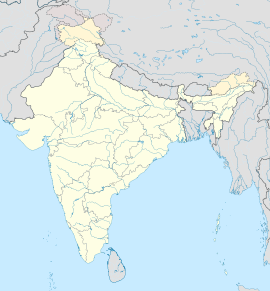Lothal
| (Shona) | |

Archaeological remains at the lower town of Lothal
|
|
| Location | Saragwala, Gujarat, India |
|---|---|
| Coordinates | 22°31′17″N 72°14′58″E / 22.52139°N 72.24944°ECoordinates: 22°31′17″N 72°14′58″E / 22.52139°N 72.24944°E |
| Type | Settlement |
| History | |
| Founded | Approximately 3700 BCE |
| Cultures | Indus Valley Civilization |
| Site notes | |
| Excavation dates | 1955–1960 |
| Condition | Ruined |
| Ownership | Public |
| Management | Archaeological Survey of India |
| Public access | Yes |
Lothal (IPA: [loˑt̪ʰəl]) is one of the most prominent cities of the ancient Indus valley civilisation, located in the Bhāl region of the modern state of Gujarāt and dating from 3700 BCE. Discovered in 1954, Lothal was excavated from 13 February 1955 to 19 May 1960 by the Archaeological Survey of India (ASI), the official Indian government agency for the preservation of ancient monuments. Lothal's dock—the world's earliest known—connected the city to an ancient course of the Sabarmati river on the trade route between Harappan cities in Sindh and the peninsula of Saurashtra when the surrounding Kutch desert of today was a part of the Arabian Sea. It was a vital and thriving trade centre in ancient times, with its trade of beads, gems and valuable ornaments reaching the far corners of West Asia and Africa. The techniques and tools they pioneered for bead-making and in metallurgy have stood the test of time for over 4000 years.
Lothal is situated near the village of Saragwala in the Dholka Taluka of Ahmedabad district. It is six kilometres south-east of the Lothal-Bhurkhi railway station on the Ahmedabad-Bhavnagar railway line. It is also connected by all-weather roads to the cities of Ahmedabad (85 km/53 mi), Bhavnagar, Rajkot and Dholka. The nearest cities are Dholka and Bagodara. Resuming excavation in 1961, archaeologists unearthed trenches sunk on the northern, eastern and western flanks of the mound, bringing to light the inlet channels and nullah ("ravine", or "gully") connecting the dock with the river. The findings consist of a mound, a township, a marketplace, and the dock. Adjacent to the excavated areas stands the Archaeological Museum, where some of the most prominent collections of Indus-era antiquities in India are displayed.
...
Wikipedia

